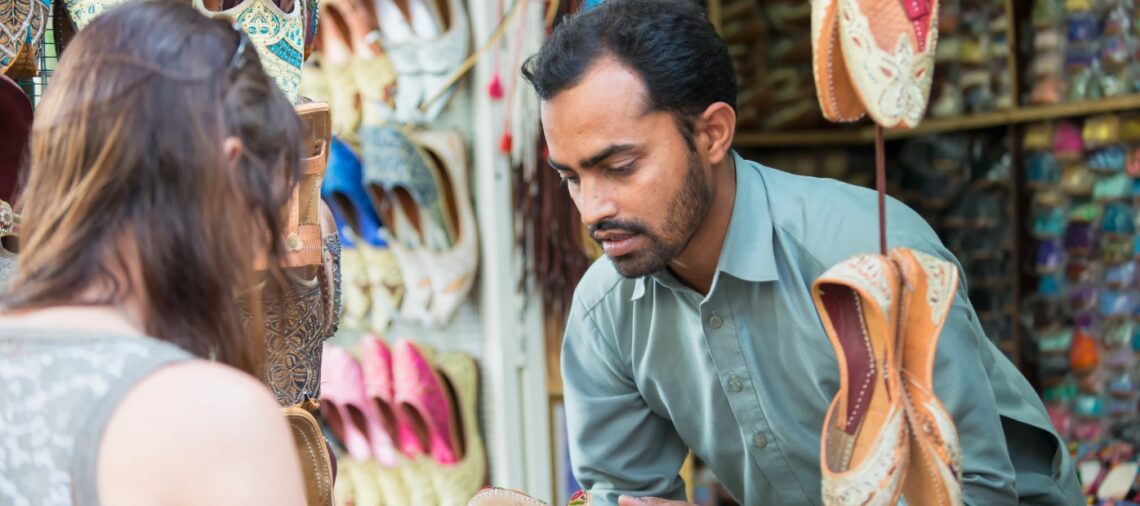Bargaining is not just a way to save money; it’s an art form practiced and cherished in many parts of the world. It is an experience that can add flavor to your travels and create unforgettable memories. From the bustling markets of Marrakech to the street vendors in Bangkok, learning how to bargain can enhance your travel experience. In this article, we’ll explore how to bargain with flair and finesse, adapting to the cultural norms of different countries.
- The basics of bargaining
- 1. Understand the value
- 2. Keep it friendly
- 3. Start with a fair offer
- 4. Be willing to compromise
- 5. Show genuine interest, not desperation
- Tips for a successful bargaining
- 1 Use the local language
- Shows respect for the culture
- Knowledges of the local language may lead to better prices
- Enhances the experience
- Helpful phrases to know
- Balance with sensitivity
- 2 Know when to walk away
- Recognizing the right moment
- Using it as a strategy
- Balancing emotion and logic
- Cultural considerations
- Leaving the door open
- Understanding it’s okay not to buy
- 3 Carry small bills
- 4 Buy in bulk
- 5 Learn to recognize quality
- 6 Time your shopping right
- 7 Embrace the culture
- 8 Use body language
- 9 Know when to stop bargaining
- 10 Utilize technology thoughtfully
- How to bargain regarding different types of products and services
- 1 Handcrafted goods
- 2 Electronic gadgets and appliances
- 3 Fresh produce and food items
- 4 Antiques and collectibles
- 5 Clothing and fashion accessories
- 6 Services like taxi rides or tours
- 7 Street art and souvenirs
- Cultural differences in bargaining around the world
- How to bargain in Marrakech, Morocco
- How to bargain in Bangkok, Thailand
- How to bargain in Istanbul, Turkey
- How to bargain in Mexico City, Mexico
- How to bargain in Delhi, India
- How to bargain in Cairo, Egypt
- How to bargain in Hanoi, Vietnam
- How to bargain in Lima, Peru
- How to bargain in Nairobi, Kenya
- Conclusion
The basics of bargaining
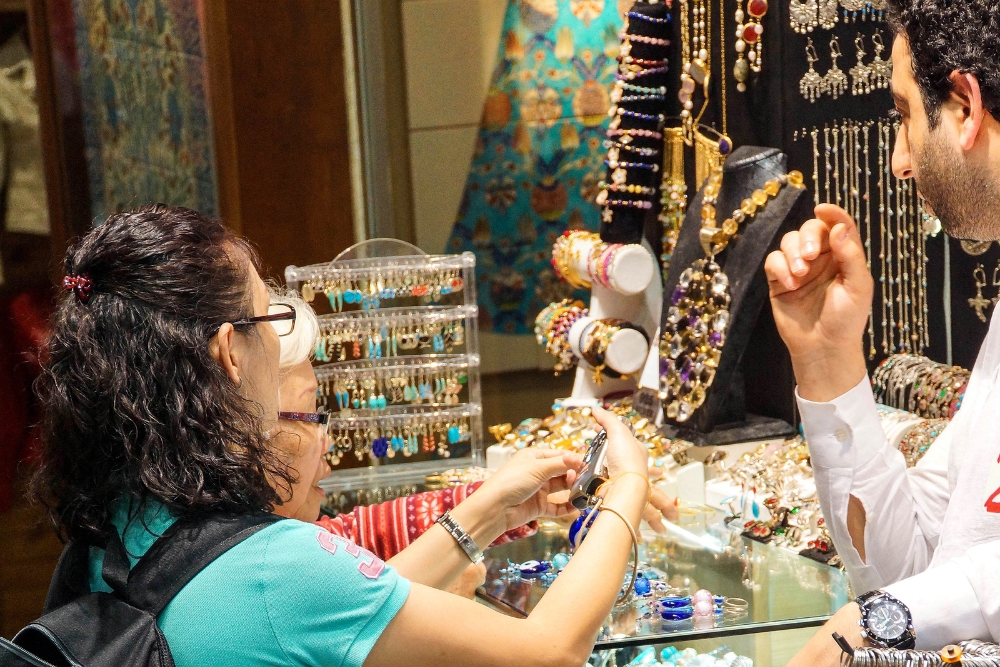
1. Understand the value
Before you begin your haggling adventure, it’s essential to understand the value of the product. Researching the average price will give you a starting point and prevent you from overpaying. Spend some time chatting with locals, or even ask your hotel staff about standard prices in the area. Remember, a deal is only as good as the value you receive.
2. Keep it friendly
Bargaining is a social interaction, so keep it friendly and fun! A smile goes a long way and can turn a business transaction into a memorable connection. If the seller sees you enjoy the process, they might be more inclined to give you a favorable deal. If the conversation turns sour, don’t be afraid to walk away gracefully, and you might just find that the seller calls you back with a better offer.
3. Start with a fair offer
While it’s common to start bargaining with a price lower than what you expect to pay, it’s essential to keep that initial offer reasonable. A low offer can insult the seller and potentially sour the rest of the negotiation. Your starting price should reflect your understanding of the product’s value and leave room for a series of counteroffers. This approach shows that you respect the seller’s work and are serious about making a purchase.
4. Be willing to compromise
Bargaining is a dance between two parties, each aiming for the best deal, but it should end in a win-win situation. Be prepared to compromise and meet the seller somewhere in the middle. Acknowledging that both parties have needs and constraints and being willing to find common ground can lead to a more successful negotiation. A good deal is one where both you and the seller walk away satisfied.
5. Show genuine interest, not desperation
Expressing genuine interest in an item is good, but showing desperation to buy can weaken your negotiating position. If the seller senses that you must have the item, they might be less willing to lower the price. Approach the negotiation with enthusiasm and curiosity rather than urgency. If you have a particular attachment to an item, try to keep it subtle and continue negotiating calmly and thoughtfully.
Tips for a successful bargaining

1 Use the local language
Shows respect for the culture
When you make an effort to learn and use a few key phrases in the local language, it demonstrates a genuine interest in and respect for the culture. Even if your pronunciation isn’t perfect, the gesture often warms the hearts of local sellers. It breaks down barriers and creates a more personal connection, setting a positive tone for the negotiation.
Knowledges of the local language may lead to better prices
Using the local language can sometimes lead to better pricing. Tourists are often quoted higher prices, but speaking even a little of the local language might prompt the seller to give you a “local” price. It’s a subtle way to show that you’re not the average tourist, possibly more aware of fair pricing and local customs, and thus deserve a more reasonable offer.
Enhances the experience
Bargaining in the local language can turn a simple shopping trip into a memorable cultural experience. You might find yourself learning new phrases, enjoying a laugh over a language blunder, or getting a local’s recommendation for the best place to eat nearby. The language becomes a bridge to deeper insights and connections, making the bargaining process more enjoyable and enriching.
Helpful phrases to know
Learning some basic phrases related to shopping and bargaining can be beneficial depending on where you’re traveling. Here are some general examples:
- How much does this cost?
- Can you give me a better price?
- Thank you, but that’s too expensive for me.
- I’ll take it for [your price].
These phrases can be translated into the local language, and practicing them before you go can make your market experience smoother and more engaging.
Balance with sensitivity
While using the local language has many benefits, it’s essential to do so with sensitivity and awareness. Be mindful of your tone, approach, and the words you choose, as misunderstandings can occur. If you’re unsure, reverting to a common language or using non-verbal cues like smiling can still communicate goodwill.
2 Know when to walk away
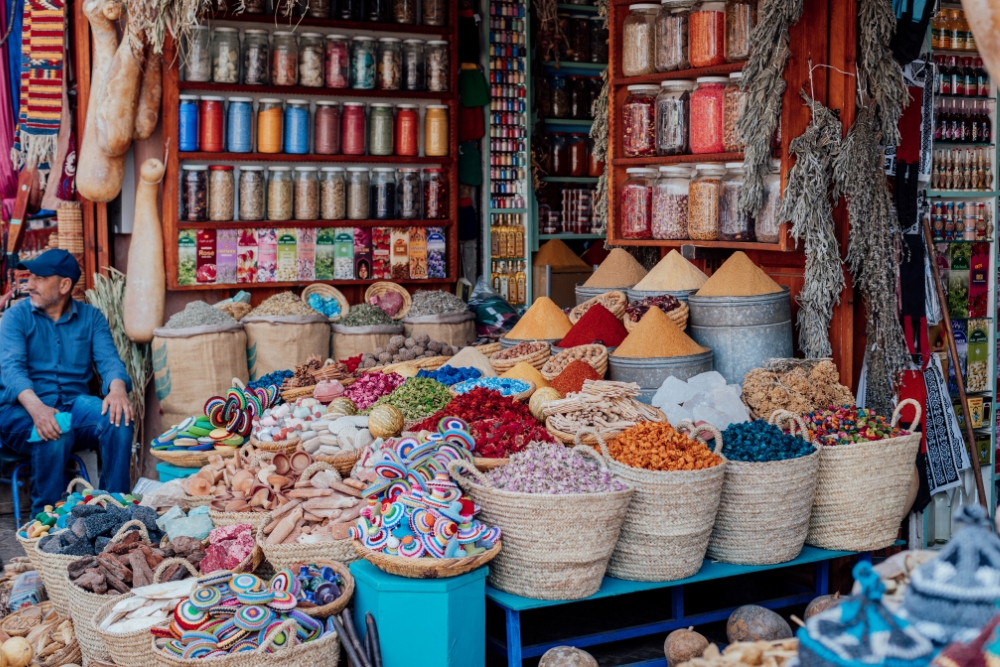
Knowing when to walk away during a bargaining negotiation is an essential skill that comes with practice and intuition. It’s not only a strategic tool but also a reflection of your understanding of the value, budget, and negotiation dynamics. Here’s more about this critical aspect:
Recognizing the right moment
Knowing when to walk away requires a keen awareness of the situation. If the negotiation reaches a point where the seller is not budging and the price is still significantly higher than what you believe is fair, it might be time to walk away. Likewise, if the interaction becomes unfriendly or you feel pressured, it’s a sign to step back.
Using it as a strategy
Walking away can also be a strategic part of the haggling process. It can prompt the seller to call you back with a better offer if done respectfully and at the right moment. It’s a non-verbal way of saying, “I’m interested, but not at this price.” This tactic needs to be employed with care, as overusing it or using it insincerely can backfire.
Balancing emotion and logic
It’s essential to balance emotion and logic when deciding to walk away. You might be emotionally attached to an item, but if it’s beyond your budget or your assessed value, walking away is the logical choice. Conversely, if you’re frustrated with the process, take a moment to determine whether the interaction or the price is the real issue. Walking away without understanding why can lead to regret later.
Cultural considerations
In some cultures, walking away is a standard part of bargaining, while it might be seen as offensive in others. Observing local practices and gauging the seller’s reaction throughout the negotiation can provide clues on when and how it’s appropriate to walk away.
Leaving the door open
If you decide to walk away, it’s generally good practice to do so respectfully, thanking the seller for their time and leaving the door open for future interaction. You might find another item in their shop later or simply cross paths again in a small market. Maintaining a positive relationship ensures you can return if you change your mind.
Understanding it’s okay not to buy
Finally, it’s crucial to understand that it’s okay not to buy. Walking away doesn’t mean failure. It means that the negotiation didn’t lead to a mutually satisfying agreement on this particular occasion. It’s a normal part of shopping, especially in markets where haggling is commonplace.
3 Carry small bills
Carrying smaller denominations of currency can work to your advantage while bargaining. By showing that you have only a limited amount with you, the seller may be more willing to come down to that price. Plus, it’s a convenient way to make the transaction smoother without waiting for change. Ensure you have only that amount in your wallet, as some sellers might ask to see it!
4 Buy in bulk
If you’re shopping for multiple items, try buying them from one vendor. Sellers are often more willing to give discounts when purchasing several products. It shows your commitment to buying and can be a good way to push the price down. Not only does it demonstrate your serious intent, but it builds rapport with the vendor, which could lead to a better overall shopping experience.
5 Learn to recognize quality
Understanding the quality of what you’re buying is essential to negotiating a fair price. Spend some time learning about the products you’re interested in, whether textiles, spices, or handcrafted goods. Recognizing the difference between quality materials and cheaper alternatives will give you an edge in negotiations. A well-informed buyer can negotiate from a position of strength, ensuring a fair price for both parties.
6 Time your shopping right
The timing of your shopping excursion can significantly impact your haggling success. Early mornings, when the markets open, might be the best time to get a deal, as some believe the first sale of the day brings good luck. Alternatively, shopping near closing time also secure a good price, as vendors offer discounts to make a few more sales before closing. Experiment with timing; you might find the perfect window for a great deal.
7 Embrace the culture
Every place has its unique cultural norms and practices when it comes to haggling. As explored earlier in this article, bargaining is a culturally rich experience, with etiquette varying widely across countries. Embrace these differences, and be open to the unique ways negotiations unfold. Understanding and respecting these cultural practices can turn haggling from a simple transaction into a memorable cross-cultural exchange.
8 Use body language

Your body language can be a powerful tool in the negotiation process. A warm smile and friendly demeanor can set a positive tone, while a shake of the head or a look of disappointment might make a seller reconsider their price. However, it’s essential to be sensitive to cultural norms, as some gestures might not translate across different societies. Observing locals and following their lead can provide clues about appropriate body language for negotiating in that region.
9 Know when to stop bargaining
Understanding when to conclude the bargaining process is as crucial as knowing how to start it. If you’ve reached a fair price and both parties seem satisfied, it’s time to agree, thank the seller, and purchase. Prolonging the negotiation unnecessarily can strain the relationship and sour the experience. Recognize that the final agreed price is often a compromise, reflecting both the product’s value and the social interaction involved in arriving at that price.
10 Utilize technology thoughtfully
In the age of smartphones, utilizing technology like currency converters or online price comparisons can be helpful. However, be mindful of how and when you use these tools. Flashing an expensive smartphone during a negotiation may send mixed messages about your budget. Instead, research ahead of time, and keep technology discreetly in the background. Step aside to avoid disrupting the negotiation flow if you must check something. This way, you can benefit from the information without compromising the personal and culturally rich interaction that bargaining often entails.
Translation apps can also be useful for getting along with vendors. Google Translate is the most widely used app for this – you simply say the phrase in English, and the app will translate it into the seller’s language, “speaking” to them instantly. Here it depends on what technique you want to adopt but also on your negotiating flair. If you know you’re a good negotiator, keep the natural way. If you want to finish faster, use digital translations. A great tool for translations on the road is this one.
How to bargain regarding different types of products and services
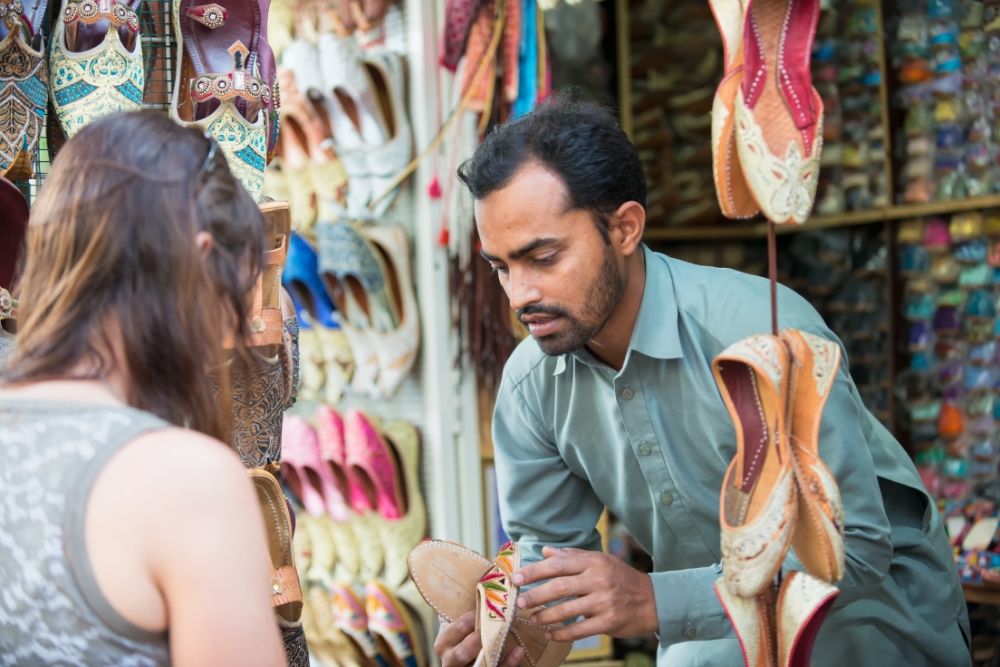
Bargaining can vary greatly depending on the type of product you’re negotiating for. Here’s a breakdown of some different products and how the bargaining process might differ:
1 Handcrafted goods
When dealing with handcrafted goods like pottery, textiles, or jewelry, bargaining requires a careful balance. Recognizing the craftsmanship, time, and skill invested in the product is essential. You might negotiate the price, but it’s important to honor the value of the artisan’s work. Being interested in the making process and expressing appreciation for the art can sometimes lead to a more favorable price.
2 Electronic gadgets and appliances
In some markets, particularly in parts of Asia, bargaining for electronics is common. Here, understanding the product’s features, warranty, and market price is crucial. Researching beforehand or even checking online prices at the shop can aid in the negotiation. Clarifying specifications and asking for discounts or bundled accessories can be effective strategies.
3 Fresh produce and food items
In local markets, bargaining for fresh produce or food items is often more subtle. Building a relationship with the vendor over time, buying in bulk, or becoming a regular customer might lead to discounts. The negotiation is usually softer, focused more on the quality and freshness of the products, and the discounts might be more modest.
4 Antiques and collectibles
Bargaining for antiques or collectibles can be a sophisticated process. Knowledge is critical, as understanding the item’s age, origin, rarity, and condition will guide your negotiation. Engaging the seller in conversation about the item’s history and expressing genuine interest without revealing your willingness to buy might help you reach a fair price.
5 Clothing and fashion accessories
In many markets, haggling over clothing and fashion accessories is standard practice. Here, you might start with an offer much lower than the asking price, especially if buying multiple items. Awareness of local prices, quality, and the latest trends can assist in the negotiation.
6 Services like taxi rides or tours
Negotiating services requires clear communication and an understanding of what’s included. Agreeing on a price (or using the meter) before starting the journey is common for taxi rides. For tours, understanding the itinerary, any extras, and the guide’s qualifications will help you negotiate a fair price.
7 Street art and souvenirs
Street art and souvenirs often cater to tourists, and prices might be initially inflated. Friendly haggling is expected, and buying multiple items or showing interest in the artist’s work might lead to a better deal.
Each product type requires a unique approach to bargaining, reflecting its value, the seller’s investment, market trends, and cultural norms. By recognizing these nuances and adapting your strategy accordingly, you can navigate the diverse bargaining landscape with grace, effectiveness, and a deeper appreciation for the rich tapestry of commerce that shapes our world.
Cultural differences in bargaining around the world
How to bargain in Marrakech, Morocco
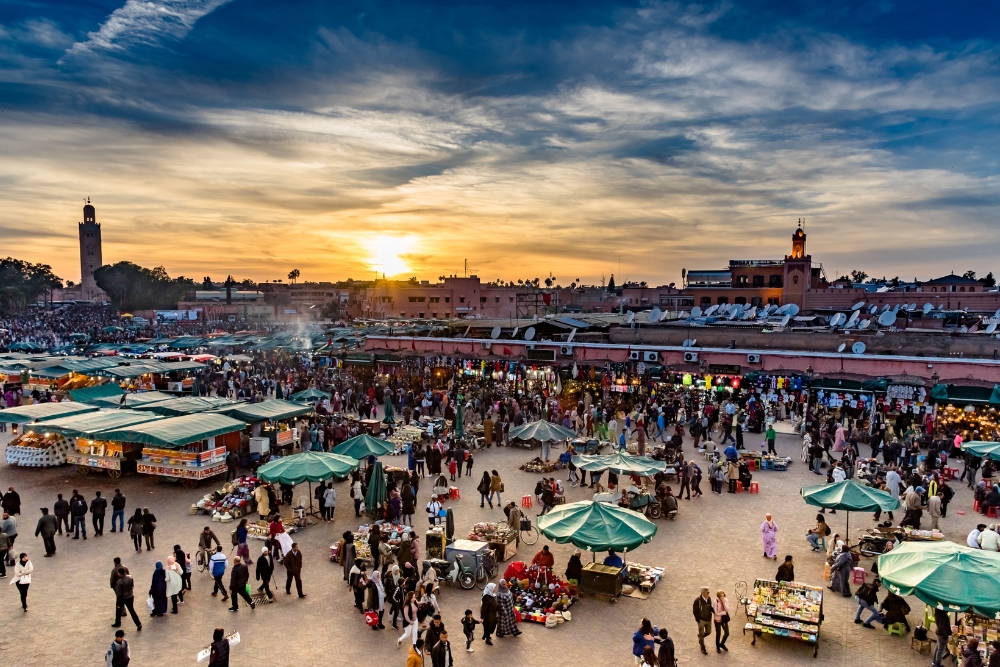
In the bustling markets of Marrakech, bargaining is not just accepted; it’s expected. Start by offering about 40-50% of the asking price. Be patient and allow the process to unfold. The vendor might act offended or dismiss your offer, but this is a part of the game. Persistence and respectfulness will likely get you a great deal. Remember, the atmosphere is colorful and lively, so embrace it and enjoy the process!
How to bargain in Bangkok, Thailand
In Bangkok, haggling is common but often more subdued. Start by asking for a discount and make a counteroffer that is 10-30% less than the asking price. Here, your attitude matters. Keep the negotiation light and polite. Losing your temper or raising your voice can be considered disrespectful. Don’t forget to smile – the Thai are famous for their friendliness, and a smile can get you a long way.
How to bargain in Istanbul, Turkey
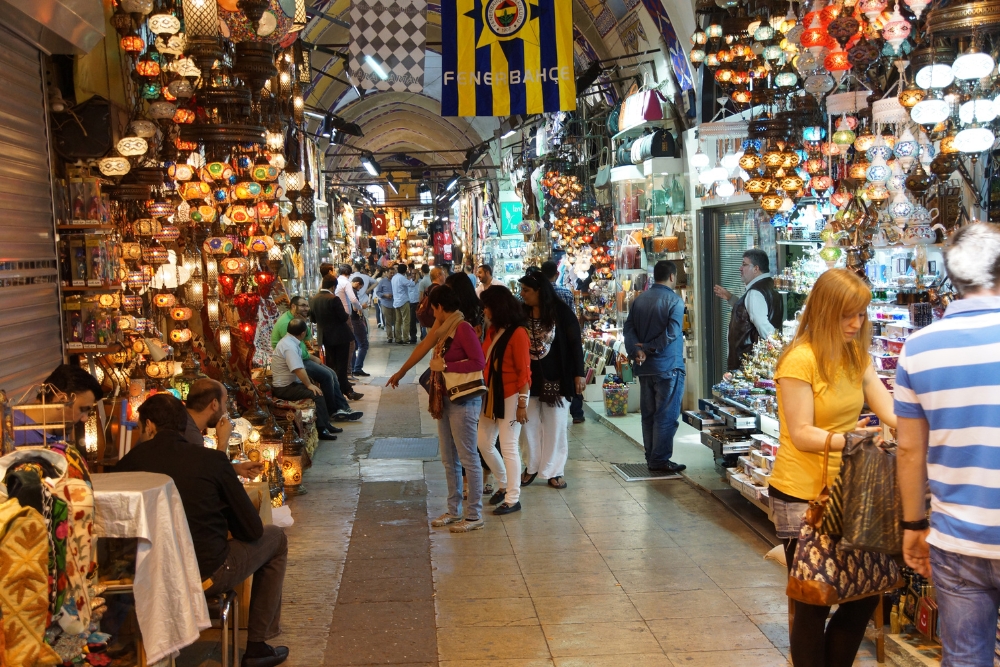
Turkish bazaars are places where haggling is practiced with elegance and style. The seller might invite you for a cup of tea, and it’s not just a courtesy but part of the ritual. Your conversation might include discussing family, weather, or politics before getting to business. It’s common to go back and forth multiple times before sealing the deal. The key here is to enjoy the process and let the relationship build naturally.
How to bargain in Mexico City, Mexico
In Mexico, bargaining is common in markets but may vary depending on the location and type of product. Start by asking “¿Cuánto cuesta?” (How much does it cost?) and then offer a bit less. Mexicans appreciate humor and a good attitude, so keeping the conversation light and friendly might win you that extra discount. Be mindful of the vendor’s feelings, and don’t push too hard, especially with small, family-run businesses.
How to bargain in Delhi, India
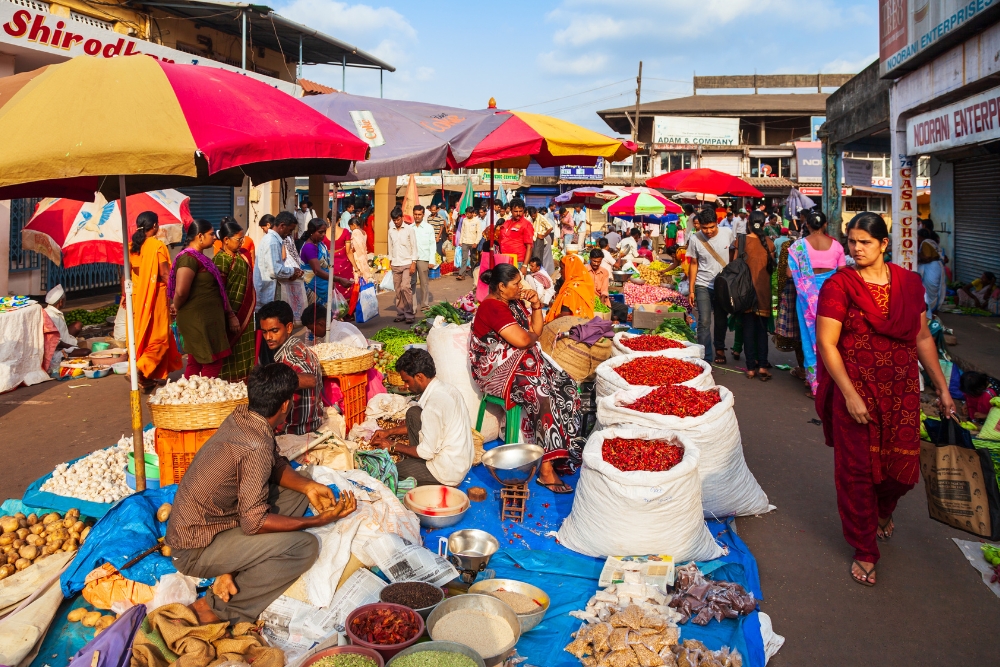
Haggling in India’s bustling markets can be an exhilarating experience. Start with about 40-50% of the quoted price and work your way up. Indian vendors appreciate a friendly attitude, so be prepared for some good-natured banter. Feel free to share a joke or two, as this could endear you to the seller. Remember, it’s common to go back and forth several times before reaching an agreement, so patience is key!
How to bargain in Cairo, Egypt
In Egypt, particularly in Cairo’s lively bazaars, bargaining is a long-standing tradition. Offering half the asking price is usually a good starting point. However, don’t be surprised if the seller counters with dramatic expressions of disbelief. It’s all part of the act, and a calm, friendly response can get you back on track. Sharing a cup of tea and engaging in small talk often precedes the actual negotiation, turning the process into a pleasant social interaction.
How to bargain in Hanoi, Vietnam
Haggling in Vietnam can be more delicate, requiring a balance between persistence and politeness. It’s advisable to start by offering around 30-50% less than the initial price. Maintain a smile and use gentle humor to lighten the atmosphere. Be respectful of the vendor’s effort to make a living, especially in smaller markets and rural areas where profit margins may be thin.
How to bargain in Lima, Peru
Bargaining is less common in urban areas of Peru, but in Lima’s traditional markets, there’s room for negotiation. Politeness is crucial, and asking for a discount rather than proposing a specific price is a good idea. Engaging the seller in conversation, showing genuine interest in their goods, and understanding the value of handmade products can lead to a more favorable price.
How to bargain in Nairobi, Kenya
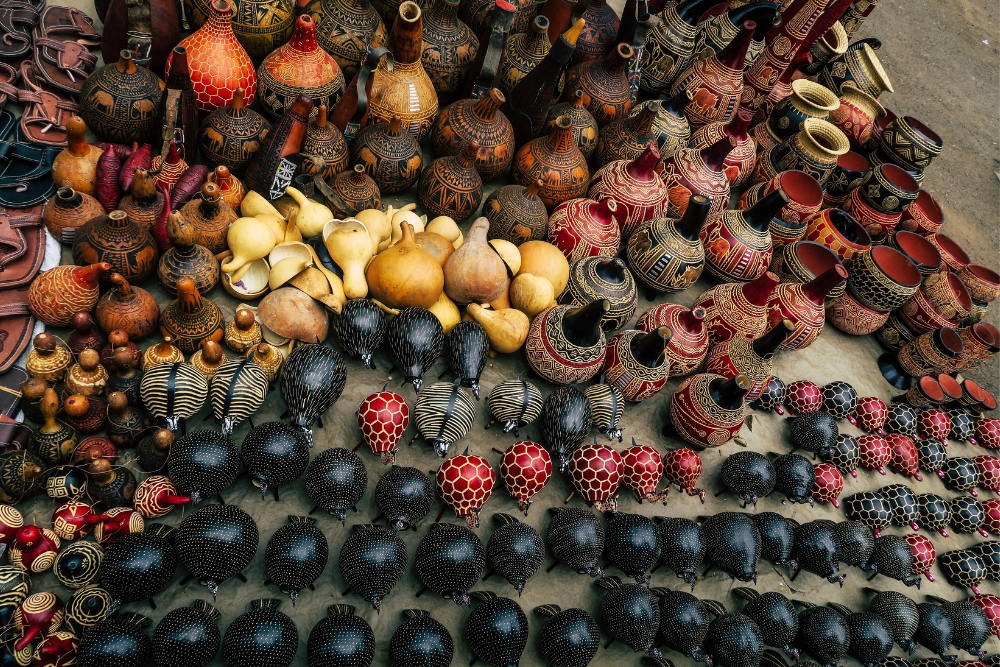
In Kenya, particularly in Nairobi’s vibrant markets, haggling is an expected part of shopping. Kenyan vendors often appreciate a buyer who knows what they want and is willing to negotiate. Starting at half the quoted price and working your way up gradually is standard practice. Keep the atmosphere light and friendly, and feel free to walk away if you feel the price isn’t fair. Often, the vendor will call you back with a better offer.
Conclusion
Haggling is an enriching experience that immerses you in the local culture. By understanding the value, keeping negotiations friendly, and being aware of cultural nuances, you’ll not only save money but also form connections and memories that last a lifetime. So next time you find yourself in a foreign market, take a deep breath, smile, and dive into the beautiful dance of haggling.
Photos: Canva Pro
You may also like: How to find the best accommodation deals at hotels and hostels. Tips and tricks

